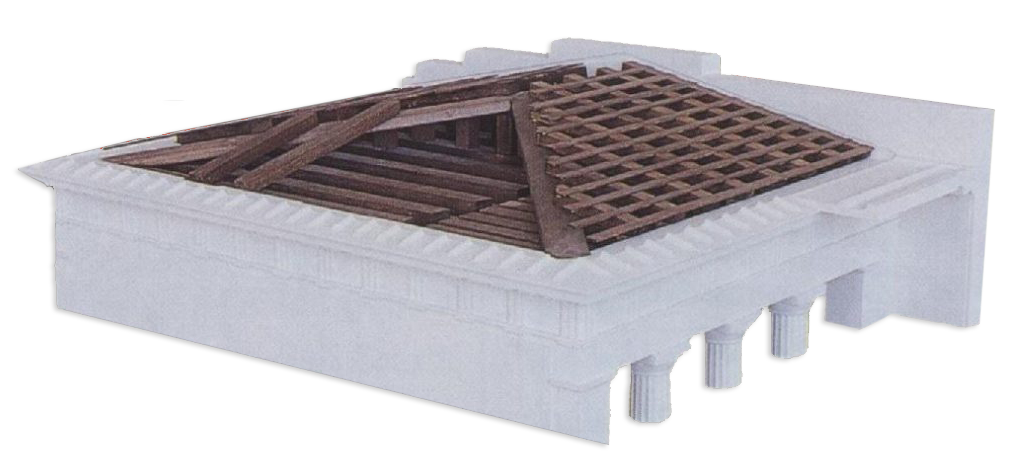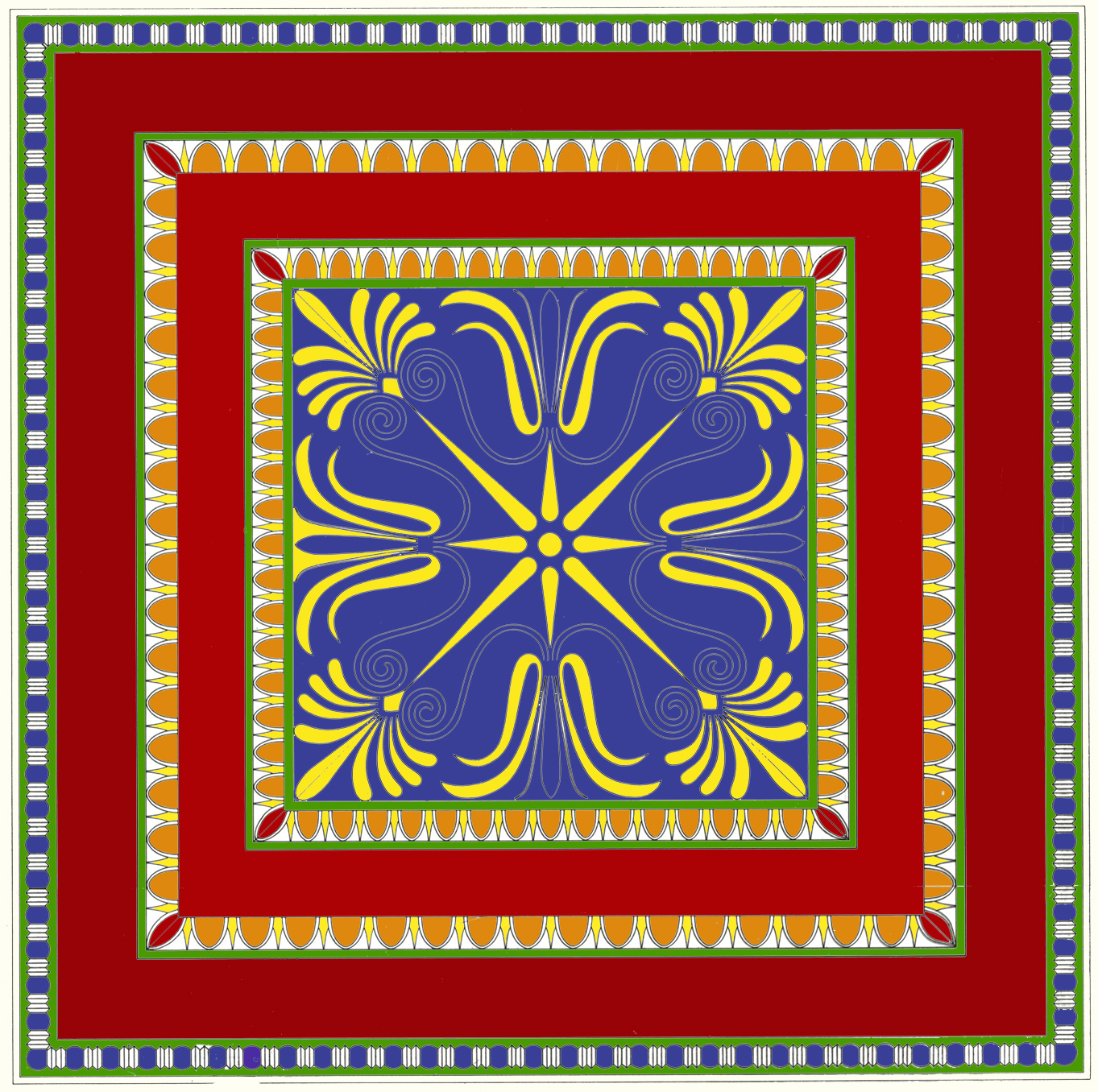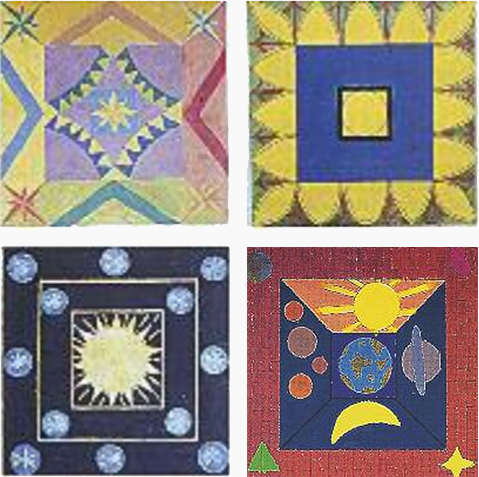Ancient Greek buildings and temples had roofs made of big wooden beams. Externally they were covered with clay or stone tiles. Unfortunately, a roof is the first part of an ancient building to collapse. That’s why it is so rare to see a Greek temple with its roof… unless the temple has been recently restored!
What can we see under the roof while looking at the ceiling?
Coffers...
… were not flat and plain! On the contrary, they were carved and gradually deepened towards the centre. This technique reduced the weight of the coffers and at the same time made them look more beautiful!
The coffers were usually painted with colourful geometrical or floral designs. Some coffers had a marble relief or metal flowers in their centre.
Usually, important ancient Greek buildings and temples were covered with horizontal ceilings made of marble under the roof! They were constructed with long beams and rectangular plaques, which used to cover the openings between the beams. Those plaques were decorated with one, two or even more square recesses, the coffers. The plaques on their turn were called “coffered plaques” (see the marked photo on the right).
On the Athenian Acropolis, one could see the impressive horizontal ceilings of the Propylaia, that is the monumental entrance to the goddess Athena’s Sanctuary! Passing through the central building of the Propylaia, a worshiper of ancient times would have had the opportunity to admire the colourful coffered ceilings painted with stars, creating the illusion of a stary sky!
Today, passing through the Propylaia, you can admire a big part of this special ceiling, after its restoration by the Acropolis specialists!








